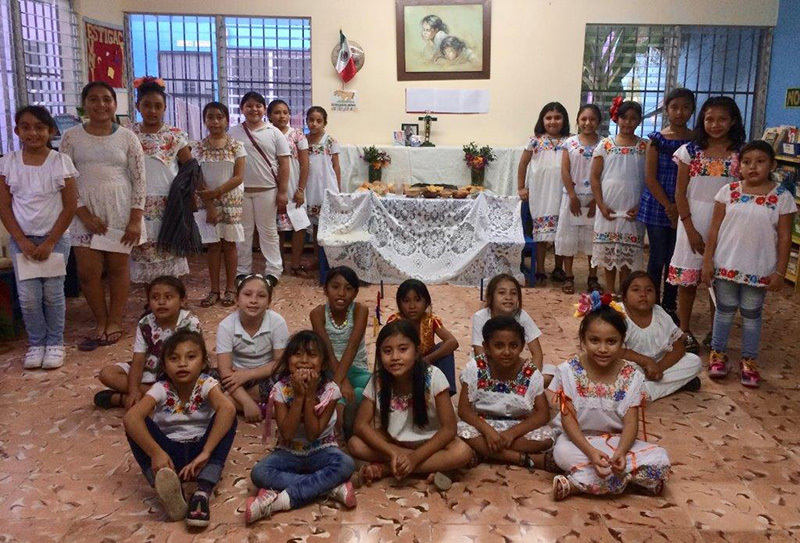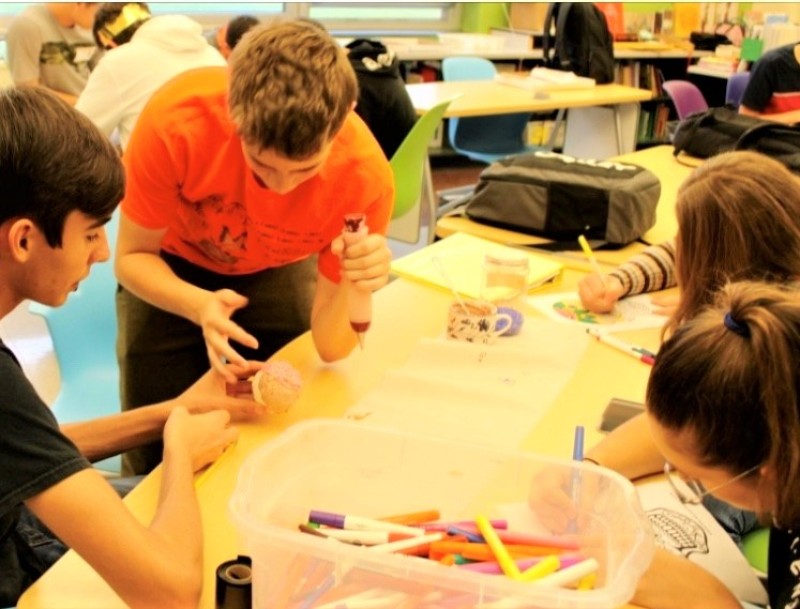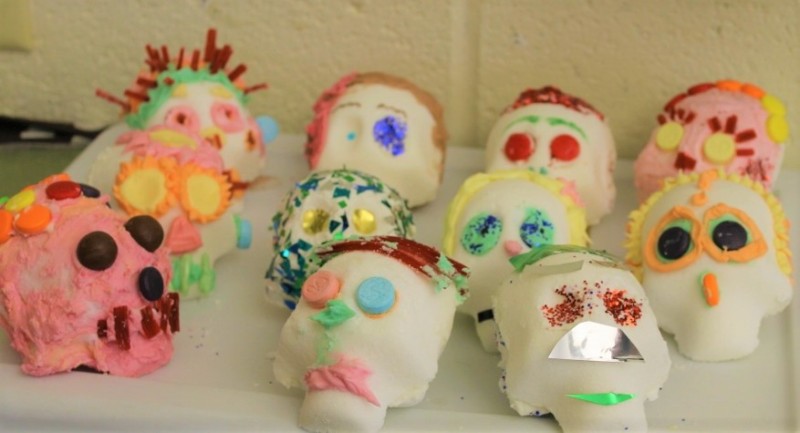
DIA DE LOS MUERTOS
Sheila Grove
11/18/2019
ERIE AND DUBOIS — November is a month for remembering those who have died. Catholics honor the saints on Nov. 1 and the souls of the departed on Nov. 2. In many churches, beloved dead, whose names are written in a book of remembrance, are prayed for at Masses throughout the month. The timing coincides with the close of the liturgical year right before Advent, the season of hope, begins.
In addition to celebrating All Hallows’ Eve, All Saints’ Day and All Souls’ Day, Catholics in many countries celebrate the Dia de los Muertos (Day of the Dead) during this same time period. The celebration is prominent throughout central and southern Mexico, in Catholic countries in Europe, and in the Philippines. It is gaining popularity in the United States.

ofrenda to celebrate Dia de los Muertos.
Contributed photo
According to Claudia Bulnes, a native of Mexico and parishioner at St. Peter Cathedral, Erie, altars— ofrendas — are set up in homes on Oct. 31. They may be simple or elaborate, one or many levels, with the highest level representing heaven. Ofrendas are purified by salt and water and include crosses made of salt. Marigolds are a common flower chosen to provide scent to the space. Decorated skulls made of sugar are placed prominently on the altar. These may appear whimsical, but present the living with a reminder of their own mortality.
Special food and treats are placed on the altar for loved ones whose spirits are believed to return on Nov. 1 and 2. The tradition says spirits of children return on Nov. 1, as they are believed to be eager for the treats waiting for them, while the spirits of adult loved ones are said to return on Nov. 2. The photos of awaited loved ones are often placed on the altar.
Prayers are said as candles are lit. The three-day feast, with origins in Catholic and Aztec cultures, is a solemn time to pray, remember ancestors and give thanks. In some communities, families visit cemeteries and clean and repair graves. At the end of the celebration, food may be shared in the community.
Bulnes and her family build an altar in their home in Erie each year. They gather at noon each of the three days to pray. She said that in Mexico, some families share the food, particularly candy, with children on Nov. 2, but the days are “not a party,they are days of reverence and prayer.” Bulnes’ mother, who lives in Mexico City, sets up a very elaborate ofrenda. Bulnes remembers that her grandmother built multiple altars throughout her home with many, many candles.
In the Diocese of Erie, Spanish II and III students at DuBois Central Catholic High School learned about the traditions of this feast this year. Their teacher, Mrs. Irene Gankosky, taught them how create the sugar skulls and add their unique artistic flair to them.

decorated sugar skulls.
Photo/Cardinal Chatter

Photo/Cardinal Chatter
-
